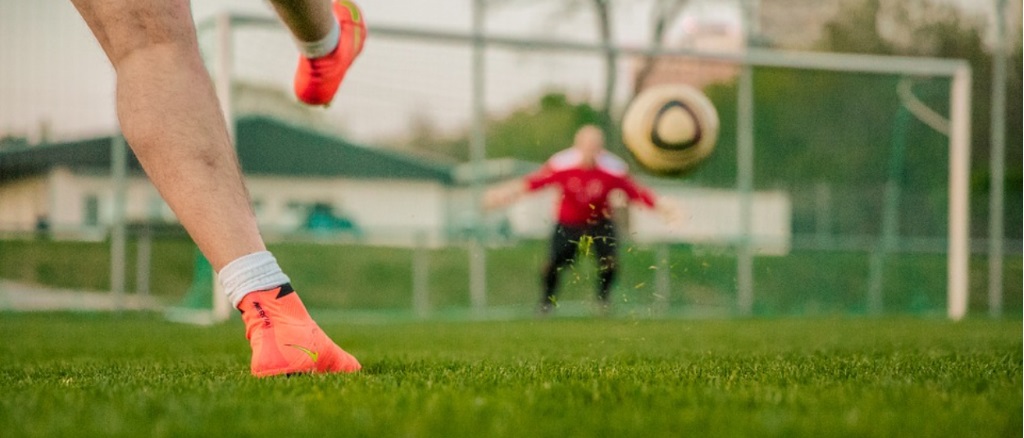

For most contact sports like football, different training must be done by players to maximize their performances. Good outcomes generated from an appropriately designed sports training program can turn to athletic excellence.
According to the International Sports and Science Association, a periodized training program is a training plan split up into parts with different focuses for every part. As a result, periodization handles training stimulus so that it would focus on generating metabolic fatigue and mechanical overload.
A study conducted by the Human Performance Laboratory at Ball State University concluded that a periodized training program could make better results compared to non-periodized ones. Below is a list of compelling reasons why an athlete or even a regular fitness enthusiast need to apply periodization to his or her workout plan.
In terms of football, here is a generic periodized weight training program (made easy for beginners). This can be used in any football sports including Australian football, American football, and Rugby (not necessarily include football as in soccer). This weight training plan is a year-round program that includes four phases as the following.
In this phase, the players are in preparation for the season or building up after an offseason. They would focus on hypertrophy - a combination of endurance, strength, and muscle size training. The loads in this stage are not necessary to be very heavy, the sets will be in the range of 2-4, and the repetition will be around 10-15.
You may find any weight that can represent a taxing light during the last few repetitions of each set, without extreme effort that will turn to failure. Keep this in mind, especially when dealing with shoulder and arm exercises. The last thing you should do is overtaxing these body parts.
Again, do not lift too heavy loads in this phase. You can do trial and error if you are unsure. To be safe, start with a light load and gradually increase it as you become stronger to retain similar perceived effort.
Also, you can add off-rink cardio, circuit training, and other aerobic exercises to this plan wherever possible. More importantly, if there is a persistent acute pain during or after weight training, seek medical or training advice as soon as possible.
We already have a good foundation from pre-season workouts. Now, in mid-pre-season, the emphasis is on strength and to lift heavier weights. At the same time, we will be training our nervous systems in conjunction with the muscle fibers so we can move heavier loads.
Get enough rest between sets as strength training can be mentally and physically demanding. If you may not recover after a session with one rest day in between, reschedule plan into two sessions each week.
Having muscle sores and DOMS or delayed onset muscle soreness is normal after these sessions. However, joint soreness is not common, and if you have this discomfort from joint pain, monitor shoulder, and arm reactions. If the pain persists, back off and ask advice from professionals.
In this phase, pre-season trials are about to happen. Often, players would put concentration on building maximum power and strength, as well as anaerobic fitness. The strength you developed during the mid-pre-season will be incorporated with power training, improving your ability to lift loads at a high velocity.
Keep in mind that we are focusing on power-an integration of strength and speed. This training requires you to lift lighter loads than in Phase 2 but heavier than in Phase 1. You need to do lesser sets than in Phase 1, as well. Also, you need to have enough rest between sets and repetitions to perform each movement as fast as possible.
The competition is underway during this phase. Hence, players are expected to be fully functional for the competition having adequate strength and power, maintenance of speed, and fitness on both aerobic and anaerobic fitness.
In this phase, perform strength (Phase 2) and power training (Phase 3) alternatively. Separate strength and field training, too. You can do the two in two different days, or split up the two in the morning and afternoon. Ultimately, skip weight training on every fifth week for recovery, but a light workout is fine to do.
Off-season focuses on resting and recovering after the competition. Still, light activity or training will take place, including cross-training and a few light gym activities. You can eat whatever you want to. However, 5-6 weeks before another competition (it depends on your trainer), make sure to limit alcohol intake and maintain healthy meal replacements as early preparation for the pre-season phase.
Tony Incenzo has been to over 2,000 football grounds - is he the world's barmiest football fan? Read about his love for Non-League football and groundhopping obsession, including watching a match in prison!
23 interesting things to do to pass the time until the football season restarts
My daughter's first ever football match - Orlando City v Atlanta United, August 2019. Written for Izzy to read when she gets old enough. Vamos Orlando
The 91 biggest football stadiums in Europe. From Manchester to Munich, Villa Park to Valencia - each one with a capacity over 40,000
